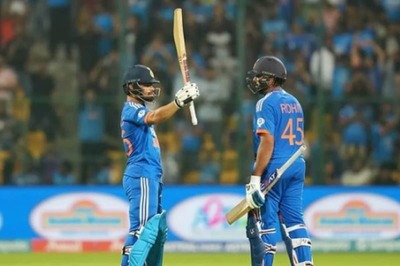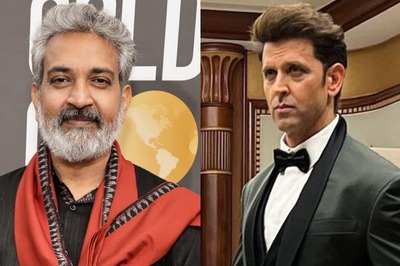
views
The bitter criticism of the film Gunjan Saxena: The Kargil Girl by the establishment and a section of retired members of the Indian Air Force (IAF) top brass has left several admirers of the force asking what the complaint was about. This writer for one didn’t find anything in the film which could qualify as gratuitous depiction of either the IAF or its male officers.
Gunjan Saxena: The Kargil Girl maps the journey of Flight Lieutenant Gunjan Saxena (played by Jahnvi Kapoor) from Lucknow to the Indian Air Force. She was one of the first two women officers to operate in a war zone. She was part of an early batch of women pilots commissioned in the IAF and played an exemplary role during the Kargil war, running rescue and supply operations in very challenging situations.
Students of cinema would know that any story or film script essentially examines human relationships, which forms the pivot. The rest of the script is woven to illustrate the evolution of these relationships. So does Gunjan Saxena: The Kargil Girl.
This Netflix original looks at the man-woman relationship through three prisms – father (played by Pankaj Tripathi) and daughter (Jahnvi Kapoor), which is well pronounced as the father has a traditional heroic disposition; the sister-brother relationship, where the younger sibling contests the big brother attitude of the older sibling; and finally senior-subordinate relationship, where the subordinate is pitched in a difficult evolving environment where matters are not helped with her immediate senior lacking confidence in her abilities.
Critics of the film fail to see that the older sibling (played by Angad Bedi) and the flight commander (played by Vineet Kumar Singh), though part of the seemingly negative discourse in the film, at the end emerge as men of great character. It’s not easy for a human being especially in a higher position in a relationship to concede one’s error of judgment and accept the abilities of the person they distrusted.
To one’s understanding, knowing the forces from pretty close quarters, those in the senior or superior positions do not easily allow somebody to dislodge them from their beliefs, which most of the time is too rigid. The change in perception the two male characters undergo probably failed to impress upon the Air Force brass that it was an evidence of the strength of character of these two officers rather than any weakness in their demeanour.
Brothers being overprotective about their kid sisters is not an Indian phenomenon alone but something practised across the globe. In fact, the characters Gunjan Saxena and her dada (elder brother) remind of the novel The Mill on the Floss, authored by George Eliot and published in 1860, which dealt with a complex relationship between Maggie Tulliver and her elder brother, Tom Tulliver, heirs to an estate in the Victorian United Kingdom.
The novel ends on a tragic note with the siblings drowning in a flooded river going out to rescue their friends. In the detailed introduction to the book, when republished a century later, it was said, “In a brief tender moment, the brother and sister are reconciled from all past differences. When their boat capsizes, the two drown in an embrace, thus giving the book its Biblical epigraph: In their death, they were not divided.”
A similar analogy could be found in the film when the brother, an officer in the Indian Army, and sister, a helicopter pilot in the Indian Air Force, come under enemy fire at the Srinagar airbase. Having helped her sister duck the fire, the brother says, “I would always not be there to save you.” This frame has to be seen with the later frame where she returns from a successful rescue mission and the brother tells her, “I am not sure whether I would always be there to save you but I am sure you would always be there to rescue me.”
Similarly, the flight commander on being rescued from the wreckage of his shot-down chopper tells Gunjan that his belief in a superior male masculinity was misplaced and concedes that women could be as good as their male colleagues if given the opportunity. Gunjan reciprocates with a gesture of goodwill indicating that they had agreed to bury the bitterness of the past.
In a statement released after the controversy erupted, as the IAF shot a note to the censor board, Saxena said, “What is really of importance here is, even though it took time for some individuals to change, those individuals did change, it did happen and in a very positive and right direction.”
One cannot believe that when such a major change as inducting women pilots in a domain dominated by men happens, all the individuals would take to it as a duck takes to water. There would be resistance, largely inadvertent, caused by the social and psychological make-up of the persons involved in the situation.
It’s to the credit of the past leaders of the Indian Air Force like Air Chief Marshal NC Suri (retired), who first had the vision to give women a chance as combat pilots, and later his successors took quick corrective measures to make the work environment amenable for their functioning at their full potential. Rather than the satisfaction of having overcome a difficult social-psychological challenge, one fails to understand why the present Air Force leadership chose to run down an inspirational story told through a well made film.




















Comments
0 comment